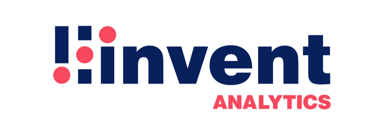Pay Stub
Have you ever wondered what those little slips of paper that come with paychecks are? They're called pay stubs! Think of them as a personal financial snapshot, giving a clear picture of earnings and deductions. Pay stubs are a valuable tool for understanding compensation.
What is a Pay Stub?
Pay stubs are a detailed breakdown of an employee’s earnings, taxes, and other deductions, giving the employee a clear view of what they’ve made and what’s been taken out. Whether they’re physical or digital, pay stubs are essential for both employees and employers as they enable financial transparency and compliance.
Nowadays, many companies are moving towards digital pay stubs, but the purpose remains the same: to keep a clear record of an employee’s wages and deductions. A typical pay stub shows an employee’s gross earnings (before deductions), the various deductions like taxes and benefits, and the employee’s net pay (the amount the employee takes home). 💰
Why Are Pay Stubs Important?
Pay stubs are essential for payroll and employee management. They serve many key purposes 👌
1. Proof of Income
Pay stubs give essential proof of income for employees looking for loans, housing, or other financial services.
2. Financial Transparency
Pay stubs are like a financial window into an employee’s paycheck. They break down the employee’s earnings, deductions, and taxes, so the employee knows exactly where their money is going. This transparency can help employees make better financial decisions and build trust with their employer.
3. Legal Compliance
In many places, providing pay stubs to employees is the law. It’s a way to make sure that everyone has access to important financial information about their compensation. Companies that don’t comply can face legal trouble.
4. Dispute Resolution
Got a question about an employee’s paycheck? Pay stubs are the go-to resource. If an employee has concerns about overtime, bonuses, or taxes, their pay stub can help HR departments quickly sort things out and resolve any misunderstandings.
Key Components of a Pay Stub
A comprehensive pay stub typically includes the following elements 👇:
a. Employee Information
- Full name
- Employee ID number
- Social Security number
- Job title or department
b. Employer Information
- Company name
- Company address
- Employer Identification Number (EIN)
c. Pay Period Details
- Start and end dates of the pay period
- Pay date
- Pay frequency (e.g., weekly, bi-weekly, monthly)
d. Gross Earnings
- Regular hours worked and rate of pay
- Overtime hours and rate
- Bonuses or commissions
- Allowances
- Total gross pay
e. Deductions
- Federal income tax
- State and local taxes (if applicable)
- Social Security contributions
- Medicare contributions
- Health insurance premiums
- Retirement plan contributions
- Other voluntary deductions (e.g., union dues, charitable contributions)
f. Net Pay
- The final amount of money the employee takes home after all deductions have been applied
g. Year-to-Date (YTD) Totals
Some pay stubs also include Year-to-Date (YTD) information, summarizing how much the employee has earned and had deducted since the start of the year. YTD data is useful for employees tracking their progress toward income and savings goals.
Legal Requirements for Pay Stubs
Every region and organization has their own rules about pay stubs, so if you're in HR, you've got to stay on top of what's required where your company does business.
Here's what you typically need to think about 📌:
- Making sure all employees get a pay stub with every check
- Including all the important details - we're talking gross pay, what's been taken out, and what's left
- Keeping those payroll records safe for a long while (usually 3-7 years, but it depends on the jurisdiction)
Note: Labor laws can change faster than you'd think. It's worth checking in with your legal team or payroll experts now and then to make sure you're still on the right track.
How to Create a Pay Stub
Creating accurate pay stubs is a crucial responsibility for HR departments. Whether you choose to do this manually or use payroll software, here’s how to ensure the pay stub is compliant and easy to understand 👇:
- Gather necessary information: Collect all relevant employee and payroll data.
- Choose a method: Decide whether to use payroll software, online pay stub generators, or create them manually.
- Input data accurately: Make sure that all information is entered correctly, double-checking figures and calculations.
- Include all required elements: Make sure the pay stub contains all legally required information.
- Offer Customization: Some companies allow employees to customize certain deductions, such as additional retirement contributions or charitable donations.
- Review for accuracy: Double-check all calculations and information before distribution.
- Distribute securely: Provide pay stubs to employees in a timely and secure manner.
Remember, accuracy is key when creating pay stubs. Even small errors can lead to significant issues down the line.
Digital vs. Physical Pay Stubs
Many companies are shifting towards digital pay stubs, but is this the right choice for every business? Both options have their pros and cons:
Digital Pay Stubs 💻
Pros:
- Environmentally friendly, reduced paper waste
- Easy to access and store
- Cost-effective for employers
- Can be accessed from anywhere with internet connection
Cons:
- Requires employees to have digital access
- May pose security concerns if not properly protected
- Some employees may prefer physical copies
Physical Pay Stubs 📝
Pros:
- Tangible record for employees
- No digital access required
- Some employees may find them easier to understand
Cons:
- Can be lost or damaged
- More expensive and time-consuming to produce and distribute
- Less environmentally friendly
As an HR professional, consider your workforce's needs and preferences when deciding between digital and physical pay stubs. Some companies offer both options to accommodate all employees.
Best Practices for HR When Managing Pay Stubs
To keep payroll running smoothly and stay compliant, consider these best practices:
1. Know the Rules
Be familiar with both federal and local labor laws that govern pay stubs. Make sure your pay stubs meet the minimum legal requirements.
2. Be Clear and Transparent
Make sure all earnings and deductions are clearly listed. Avoid using confusing jargon or abbreviations. Transparency builds trust between the employer and the employee.
3. Offer Options
If possible, let employees choose between physical or digital pay stubs. This ensures everyone can access their pay information, no matter their tech skills.
4. Keep it Secure
For legal and financial reasons, it’s essential to keep accurate and secure records of all pay stubs. Make sure both physical and digital pay stubs are stored safely and accessible when needed.
5. Audit Regularly
Regularly check your payroll system to ensure all pay stubs are accurate and compliant with the latest laws. Catching and fixing errors early will prevent bigger problems later.
Common Mistakes to Avoid
When handling pay stubs, watch out for these common mistakes ⚠️:
- Math errors: Always double-check calculations to avoid mistakes in gross pay, deductions, or net pay.
- Missing details: Make sure every piece of legally required information is present on the pay stub.
- Inconsistent layout: Keep the format consistent so it’s easy for employees to read and understand.
- Late delivery: Ensure employees receive their pay stubs on time, ideally with each paycheck.
- Lack of security: Protect sensitive payroll data by using strong security measures.
- Not addressing employee concerns: Be ready to clarify any part of the pay stub if employees have questions.
- Failure to keep records: Keep payroll records, including pay stubs, for the required time period based on local laws.
Pay stubs are more than just pieces of paper or digital documents – they're a crucial link in the payroll process, providing transparency, ensuring compliance, and helping employees understand their compensation. As an HR professional, mastering the ins and outs of pay stubs is essential for maintaining smooth operations and fostering trust with employees.
Remember, a well-managed pay stub system is a reflection of a well-run HR department and can contribute significantly to overall employee satisfaction and organizational success. 💪
Get a demo
- Quickly find top candidates with smart application management
- Improve team collaboration using built-in communication and workflows
- Offer a smooth candidate experience to strengthen your employer brand
- Count on 24/7 support for a hassle-free hiring process
- Quickly find top candidates with smart application management
- Improve team collaboration using built-in communication and workflows
- Offer a smooth candidate experience to strengthen your employer brand
- Count on 24/7 support for a hassle-free hiring process
"We truly felt the speed difference. Everything was smoother, and candidate feedback was much more positive. It made our jobs easier."

Trusted by 100+ teams
Get Informed,F.A.Q.
Revolutionize your hiring process with our transformative Applicant Tracking System (ATS.)
Suggested keywords
What is Cultural Fit?
Let's talk numbers - 89% of employers put cultural fit at the top of their hiring checklist. Pretty huge. But wait a second... what exactly does cultural fit mean in today's fast-moving workplace?The ...
Employee NPS Benchmarks
An Employee NPS benchmark is basically a way to see how your company’s employee satisfaction stacks up against others. It helps turn your eNPS score into something useful by giving it context. 📌You'r...
Salary Benchmarking
Salary benchmarking is basically figuring out if what you're paying your team makes sense compared to what others are offering for similar roles. It’s like checking the going rate before you buy somet...
















